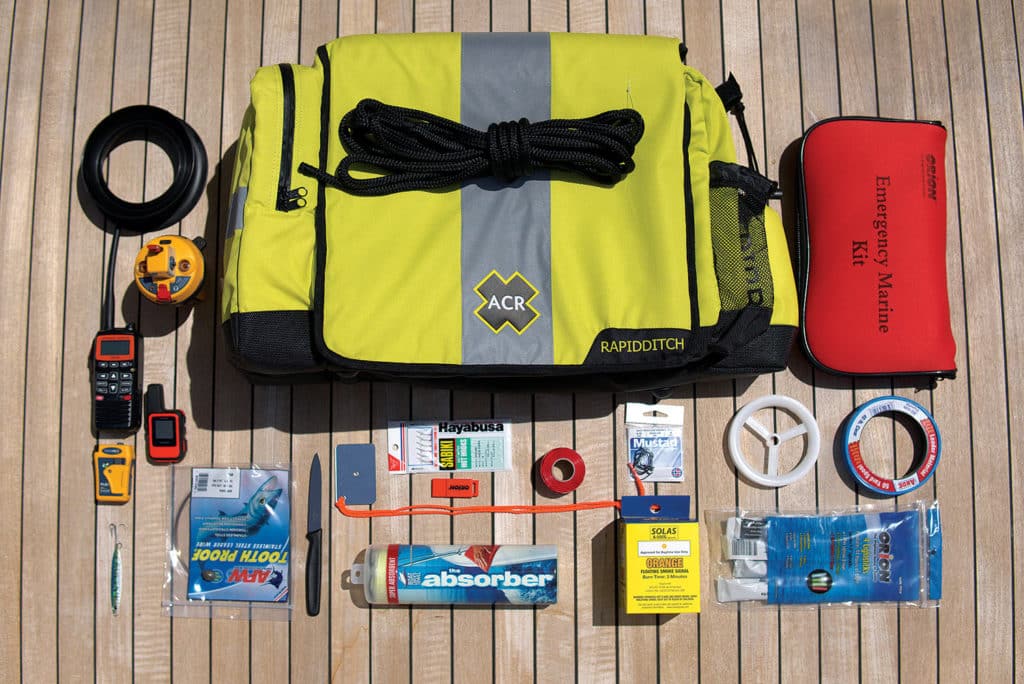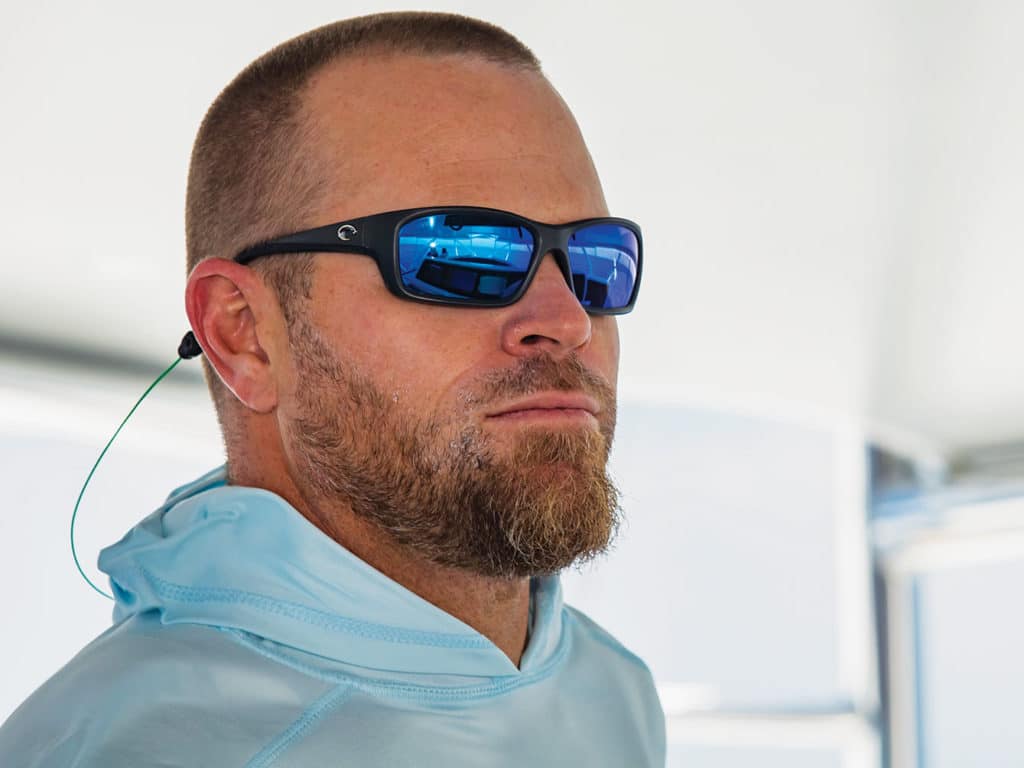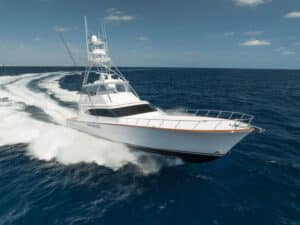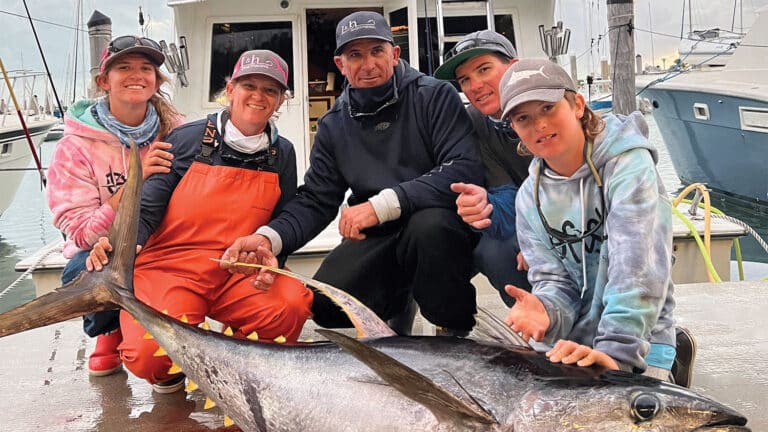
There is one small accessory that can easily mean the difference between survival while awaiting rescue and simply not making it. A life raft is essential, but the US Coast Guard has to be able to find you first. That waiting game is why the all-important ditch bag is so crucial.
When a tragedy happens at sea, you don’t have minutes to spare. You’re lucky if you have seconds, and there’s a good chance there won’t be any time to go around the boat grabbing comfort items to take with you on the life raft, so it’s best to have a bag ready and waiting should such an event take place. As you build your overboard—or ditch—bag, it’s important to consider the obvious safety equipment, but it’s also time to get creative and think of the small things that might not seem, well, obvious.
First, the Essentials
Signaling devices are the top priority. An EPIRB and/or a PLB should live in the bag at all times. Even if you have an EPIRB on the bridge, it can be easily forgotten as you step into the life raft with a million scenarios running through your head, so it’s ideal to have one mounted to the boat and another in your bag. There are a lot of options out there, each with different bells and whistles, depending on how much you want to spend.
The risk of EPIRB or PLB failure is minimal, but I don’t ever want to take that chance. For minimal cost, you can add a PLB to your bag in addition to an EPIRB. Having both also might buy you time should one device run out of battery and you have to activate the other.
Watch: Check out this video of the Viking 37 Billfish.
The next priority is to add signaling devices to get the attention of boaters both near and far—or the Coast Guard. This includes multiple types of flares, signaling mirrors, whistles, day markers, smoke signals, dye markers, air horns, or anything else that you can think of to make your location visible from a distance. Even a pack of white plastic trash bags take up minimal space and can be blown up and tied in a knot as a good marker. They can also be used as a breadcrumb trail, essentially expanding the search-and-rescue footprint, especially at night if you put a glow stick in them.
Communications is the next thing to think about. A handheld VHF radio with extra batteries has been the standard for a long time, but more recently, satellite communication devices have made huge improvements in size, cost and technology. The inReach-type devices allow for two-way satellite communication, so you can message loved ones or send an SOS, which hopefully guarantees a rescue. Having the ability to communicate—even in the confines of a not-so-comfy life raft during a rescue situation—could not only help save your life, but also help keep your sanity. Humans are natural communicators, and being able to keep in touch with someone in a dire situation can help keep you calm—and your wits about you.
The Extras
Imagine what you might need for survival; drinking water and light, nonperishable food rations are important to keep your energy up, and lifesaving medications and a small marine first-aid kit will allow you to address any medical conditions or injuries. A ⅜-inch dock line or some length of rope can be used to keep things together that may have separated from the boat, or worst case, to keep people or floating objects together to aid with visibility. A large chamois is good for collecting rainwater and keeping you cool and shaded if necessary. A small fishing kit is important for both survival and to occupy your mind. You have limited space in a life raft, so ditch bags should be somewhat lightweight and easily accessible. Simplicity is key to building a functional but not overdone ditch bag.
While each person has their own idea of what “essential” is, lightweight items that take up little room should be considered because you can’t predict how long an in-water rescue will take. Whether it’s waterproof books or a deck of cards to keep your mind occupied with anything other than the doom and gloom of drifting at sea is essential for your mental health and well-being. You might need to take notes about communications, positioning, time of day, etc., so an impervious notepad and pen should also be considered important ditch-bag items.\
Read Next: Handheld electronics like VHFs, EPIRBs and more should be included in your ditch bag.
Consider the Bag Itself
ACR makes two different-size bags that have flotation built into them, and there are waterproof backpacks on the market as well, so be sure to choose a bag that fits everything you need in it, plus your extras. The bag also must be stored in an easy-to-grab location out of the elements. Backpacks generally don’t float, but adding a small buoy can alleviate that conundrum. What I like about using a backpack is that you can put it on your shoulders and snap the buckles around your chest, leaving your hands free for other tasks, such as helping your passengers in the life raft. I bet you could even attach a personal flotation device to the backpack, if needed, and a water-activated light is never a bad idea.
Advance ditch-bag planning can not only help you survive, but it can also keep you happy and level-headed in an extremely difficult situation.

What’s in Your Ditch Bag?
- USCG-approved Orion coastal flare kit
- Standard Horizon handheld VHF—battery charged, removed and stored in a plastic zipper bag
- Waterproof flashlight—batteries removed and stored in a plastic zipper bag
- Dye markers
- Ocean Signal EPIRB
- Ocean Signal PLB1 EPIRB
“When traveling, I supplement my coastal ditch bag with energy bars, bottled water, toilet paper, tackle kit, knife, spare batteries, first-aid kit, sunscreen, seasickness medication, pain relievers and extra flare rounds—you can’t have too many flares,” Andresen says.







